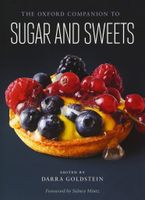Advertisement
Food Preferences Determined by Sweetness
Published 2015
One reason why both children and adults prefer so many sweet foods is that sweetness is a major factor in the development of food preferences. Thus, repeatedly experiencing a novel food flavor with a sweet taste leads to an increase in liking for that flavor, over and above pairing the flavor with just water. This observation remains true even when the flavor is tasted afterward without the sweet taste being present. The interpretation of this effect is that sweetness in intrinsically positive, and the flavor becomes—by association—also positive. In addition, though, a sensation of sweetness may be a signal to the body that energy is being provided, something most clearly shown when flavors are paired with a caloric sweetener. Again, liking for the flavor increases, but only when the sweetener provides energy—that is, the increase does not occur with nonnutritive sweeteners such as aspartame or saccharin. Similarly, such conditioned flavor preferences do not operate in the absence of hunger, so that need for energy determines whether or not additional energy from a sweetener is sufficiently positive to generate a preference for an associated flavor. For the same reason, the reverse is also true: the pleasantness of a sweet taste relies on our metabolic needs, and ingesting calories to meet those needs reduces the pleasantness of a subsequently experienced sweet taste.


